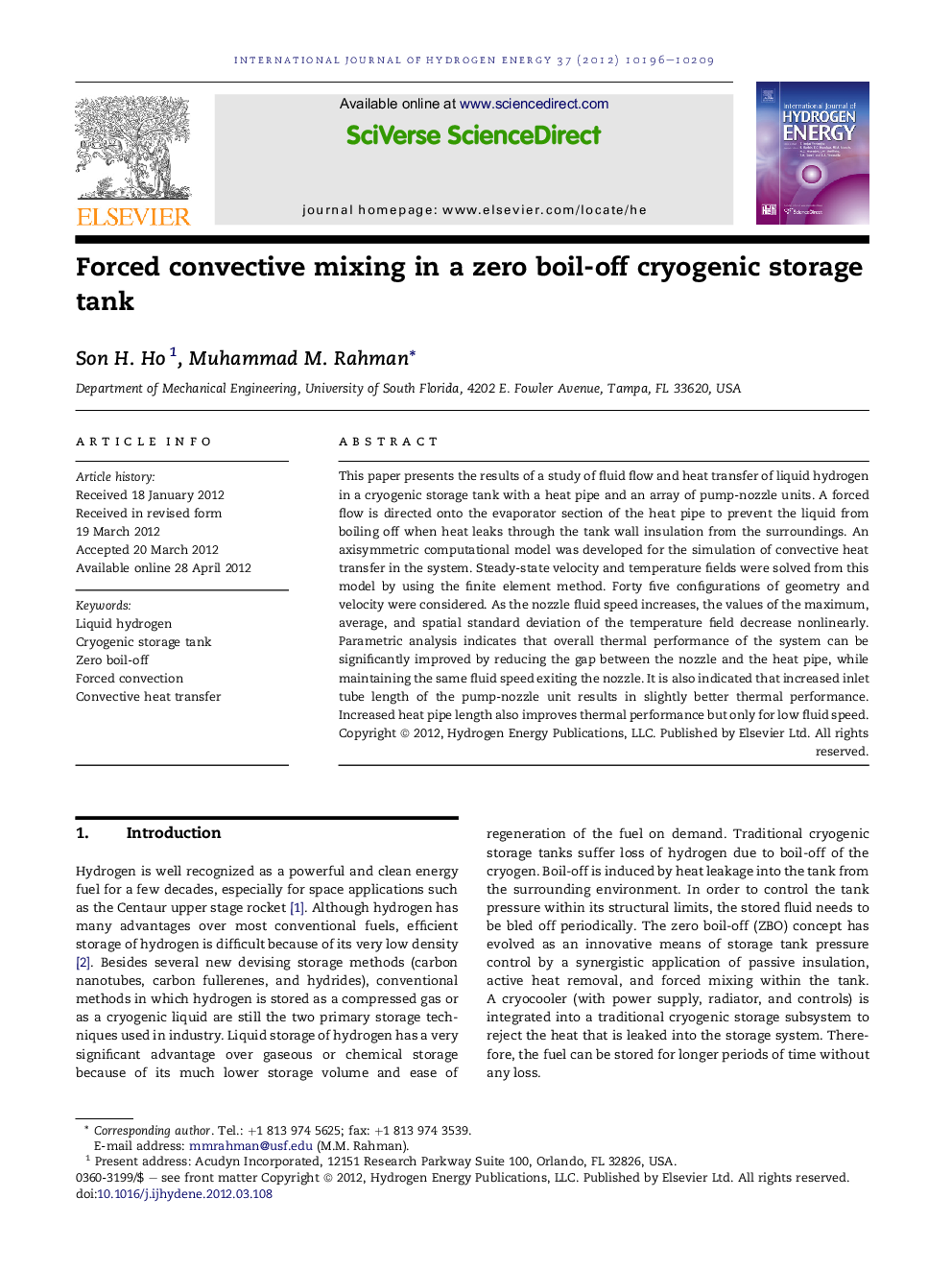| Article ID | Journal | Published Year | Pages | File Type |
|---|---|---|---|---|
| 1275206 | International Journal of Hydrogen Energy | 2012 | 14 Pages |
This paper presents the results of a study of fluid flow and heat transfer of liquid hydrogen in a cryogenic storage tank with a heat pipe and an array of pump-nozzle units. A forced flow is directed onto the evaporator section of the heat pipe to prevent the liquid from boiling off when heat leaks through the tank wall insulation from the surroundings. An axisymmetric computational model was developed for the simulation of convective heat transfer in the system. Steady-state velocity and temperature fields were solved from this model by using the finite element method. Forty five configurations of geometry and velocity were considered. As the nozzle fluid speed increases, the values of the maximum, average, and spatial standard deviation of the temperature field decrease nonlinearly. Parametric analysis indicates that overall thermal performance of the system can be significantly improved by reducing the gap between the nozzle and the heat pipe, while maintaining the same fluid speed exiting the nozzle. It is also indicated that increased inlet tube length of the pump-nozzle unit results in slightly better thermal performance. Increased heat pipe length also improves thermal performance but only for low fluid speed.
► Cryogenic storage of liquid hydrogen with zero boil-off. ► Forced convective mixing for greater temperature uniformity. ► Passive heat dissipation using a heat pipe.
